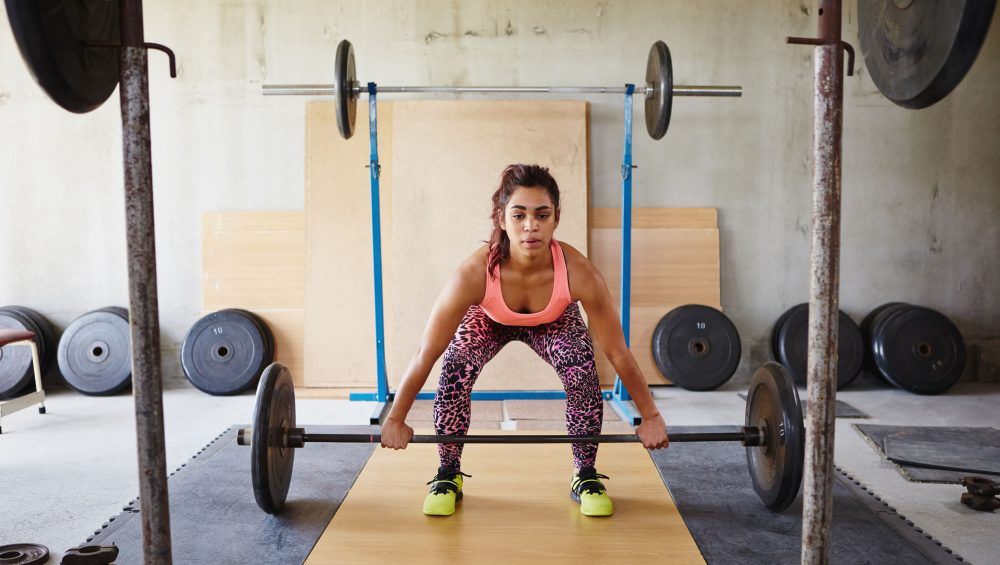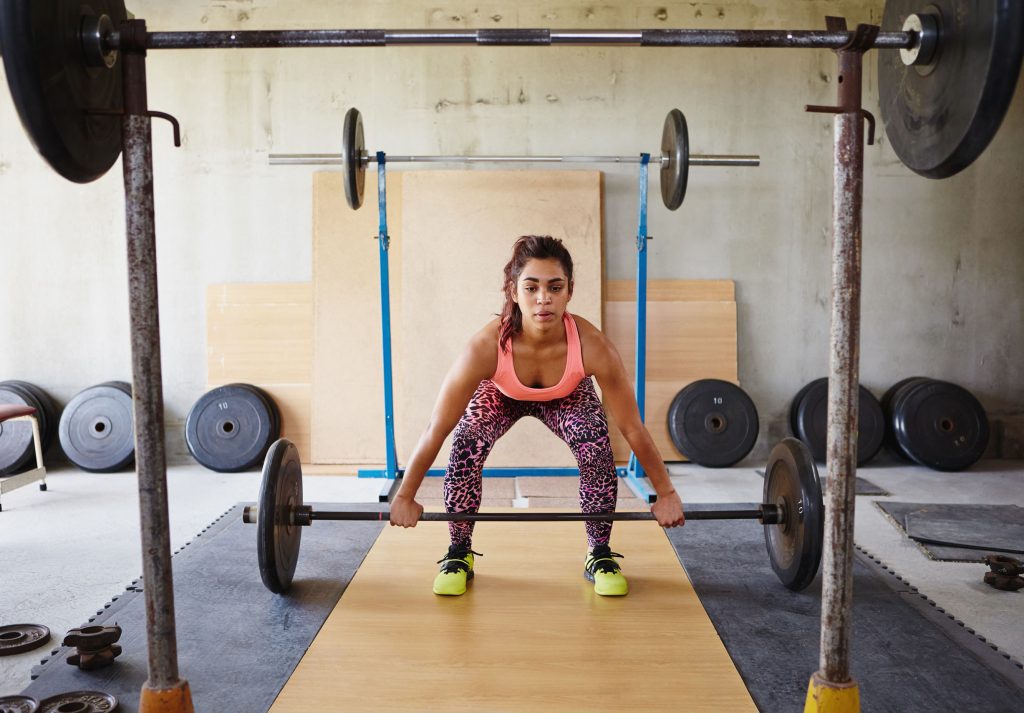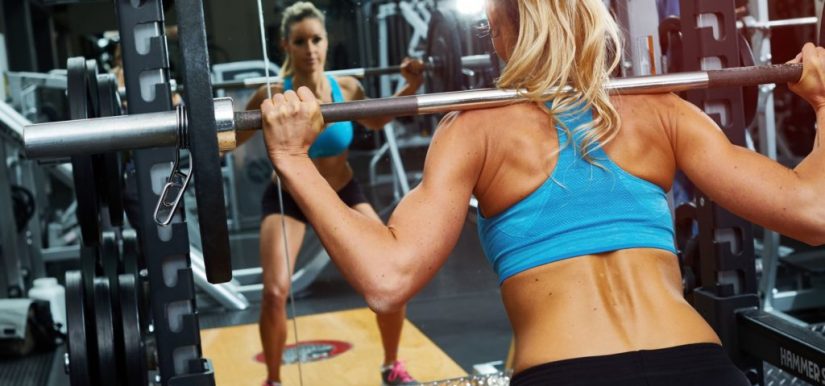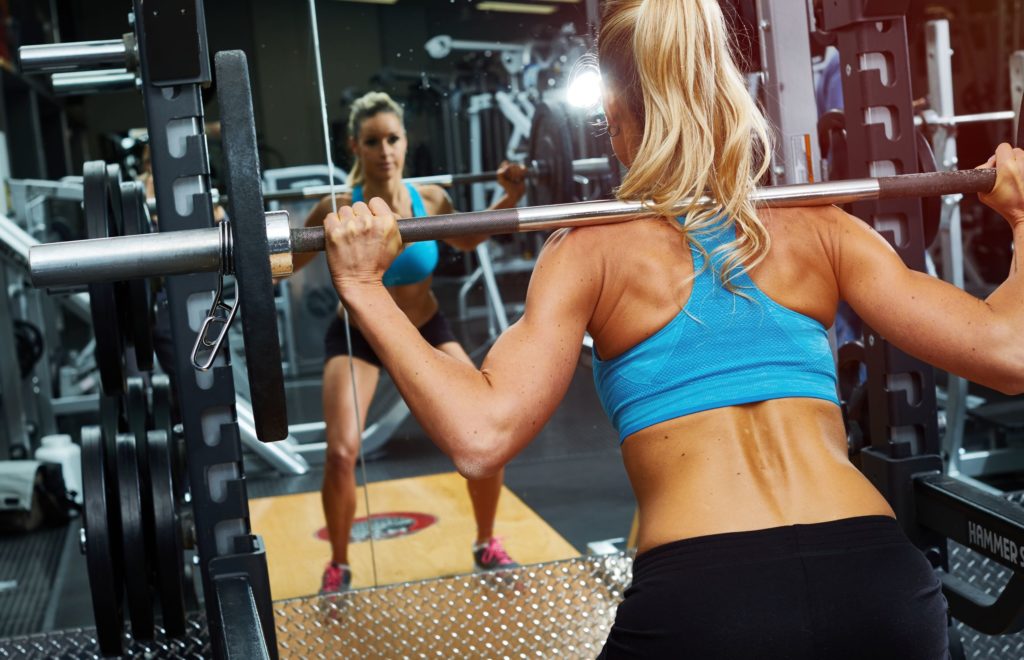Ever wonder what some of the best coaches/trainers say their favorite mobility drills are? Squat regressions? Favorite exercise in general? No? Well, too bad.
Shane McLean asked some well-known coaches (John Rusin, Meghan Callaway, Meg Julian, Eric Bach, and myself) what some of their favorites are. Go learn something.
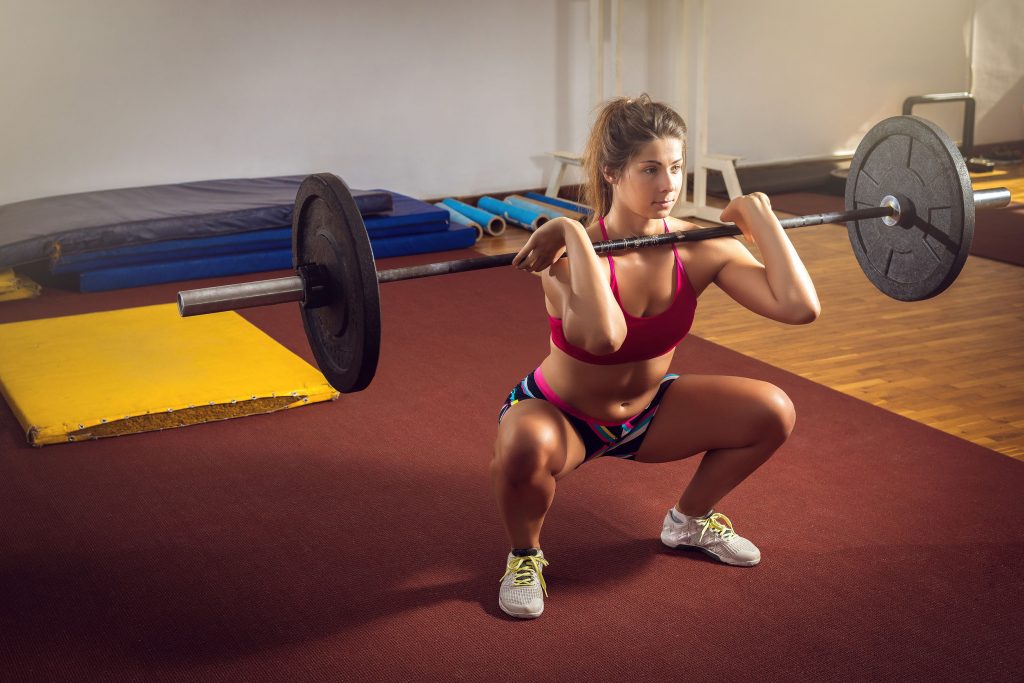
Lets Play Favorites….
My favorite color is blue.
My favorite food is potatoes. I’ve never met a potato I didn’t like yet.
My favorite movie line is “I feel the need, the need for speed.” I’m pumped that Hollywood is making a sequel to Top Gun. I’m already counting down the days to its release next July.
I wonder if they’re going bring back Goose from the dead?
https://www.youtube.com/watch?v=7O1ZhHts8MI
Bring the subject back to exercise, my favorite move is deadlifts. If left to my own devices, I’d deadlift, do some curls, slam down some coffee and then go home. However, my coach makes me do a bunch of stuff I hate but really need.
That’s what great coaches do.
Great coaches also have their go to exercises that end up in most of the programs they write. Usually, you need to attend a seminar or deep dive the internet to find out what the smartest minds in the fitness industry are doing.
However, let me save you the trouble. I’ve asked some of the industry biggest names about their go to moves and exercises they never go without. Who knows, you might learn something.
Tony Gentilcore. <– That’s Me
1) Number One Foam Roll Drill. And Why?
My #1 foam rolling drill comes in the form of a brief rant. Now, mind you, understand I am a fan of foam rolling and do encourage my clients to partake prior to each training session. Or after, I don’t care.
This is my ” go to” series.
That being said I do feel many people place too much credence/emphasis on foam rolling. I can’t tell you how many people have come to me seeking advice on why this hurts and that hurts and why they can never stay healthy. Whenever this happens I’ll inevitably ask them to show me their warm-up.
Fast forward 30 minutes.
Yeah, that’s right….it’s not uncommon for some people to spend upwards of 30 minutes (sometimes more) foam rolling. Foam rolling. After that long even Sting, a proponent of something like 7-hour tantric sex sessions, would be like, “come on already, let’s get it over with.”
When this happens, I’ll come straight out and say it: “THAT’s why you’re always hurt.”
People need to get out of this delicate flower, corrective exercise bubble mentality. Sure, foam rolling helps…but not for the reasons most people think. Do it if it makes you feel better. But get the eff off and go TRAIN.
2) Number One Mobility/Flexibility Move. And Why?
My favorite move is the Yoga Push-Up Complex.
I like it because it’s ONE move that hits a lot of trouble areas for most people:
- T-Spine Extension & Rotation
- Hip Flexor Length
- Glute Activation
- Hamstring & Adductor Length
- Scapular Protraction & Upward Rotation
About the only thing it doesn’t address is small biceps….;o)
3) Your Number One Squat Regression. And Why?
Slowing people down.
Lets discuss this under the guise of butt wink and squatting. It’s a thing.
Basically, it’s a less nerdy way of informing someone “dude(tte), you’re running out of hip flexion so you’re compensating with excessive lumbar motion.”[footnote]People don’t really talk like this, so hence the term “butt wink.”[/footnote]
Many think the culprit is tight hamstrings. Nope.
The hamstrings are bi-articular muscle crossing both the knee and hip joints. When we squat (go into deep(er) hip flexion) the hamstrings shorten at the knee and lengthen at the hip; there’s very little net increase in length.
When butt wink occurs it’s almost always a lack of tension issue. Meaning, often, there’s lack of pelvic control either due to one of two scenarios:
- Lack of strength/stability.
- Lack of motor control.
If your trainer tells you it’s because of tight hamstring he’s a dickwad.
In either case one of the best ways to address it is to slow down. You need to control slow before you can control fast. Coaching people up to adopt a better bracing strategy (core on, spread the floor with feet, PULL down into the squat in a controlled manner) will make a significant improvement for most.
On an aside: what may present as a mobility issue (unable to squat deep) may just be a stability issue. Adding a slight anterior load (plate or Goblet Squat) can fix things quickly.
4) One Exercise You Cannot Do Without. And Why?
I know most people who read my stuff think I’m going to say deadlifts here. But I’m not. I think the one exercise I do the most – and incorporate into my client’s programs the most – are carry variations.
What’s not to like about them? They work on core stability, hip stability, posture, grip, and take little to no coaching to perform them. And, they can be done with dumbbells, kettlebells, various barbells, people, you name it.
Just don’t make these common mistakes:
Trainer Meg J (I Guess It’s Like a Self-Titled Album)
Instagram HERE.
1) Number One Foam Roll Drill. And Why?
Touch Down, or a wall slide, on a foam roller. Not an actual rolling drill, but a great chest opener and client favorite. Much of the general population (and even athletes), battle “Upper Crossed Syndrome“.
Due to how much time we spend behind computers, looking down at phones, or sitting behind a wheel or TV, our necks and shoulders begin to round down and in. This can be a factor in neck, back, and shoulder pain, as well as impact breathing. This drill allows gravity to help naturally open the tight chest area.
2) Number One Mobility/Flexibility Move. And Why?
Wall slides. Like the Touch Down on the foam roller drill, wall slides help opens the chest, engage the back muscles, and bring more blood flow to those areas.
3) Your Number One Squat Regression. And Why?
Goblet squat with raised heels. Goblet squats are excellent for building anterior core (abs) strength and maintaining balance while learning the movement pattern. If someone has tight calves, or several other potential lower body issues, adding plates under their heels allows them to move more smoothly.
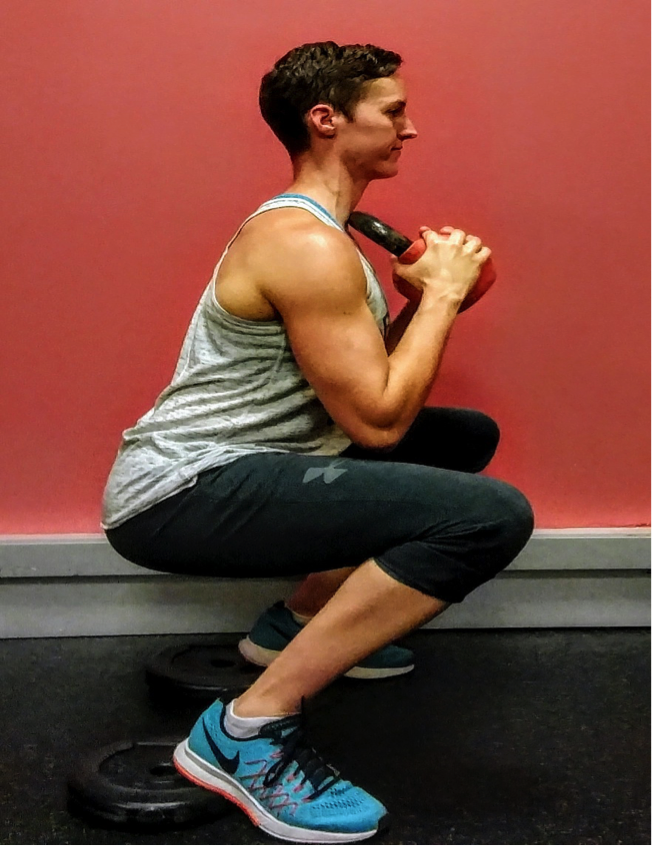
4) One Exercise You Cannot Do Without. And Why?
While I’m tempted to pick the phenomenal, almost as good as bacon, exercise of the Deadlift, my final answer will the ASLR (Assisted Straight Leg Raise) with band. This exercise is incredible for building core strength, teaching tension, and getting the hips and abs to work in unison.
Meghan Callaway, Strength Coach
1) Number One Foam Roll Drill. And Why?
Truthfully, I don’t do much with the foam roller. In most cases, I find that when you prioritize stability, the need for foam rolling is much less. While rolling out your quads might feel good, I don’t think it will make or break your performance or overall health.
Many people expend too much of their time energy aimlessly using the foam roller, when their time would be better served focusing on improving other areas of their overall health and fitness.
Note From Tony:
https://www.youtube.com/watch?v=TAryFIuRxmQ
2) Number One Mobility/Flexibility Move. And Why?
I will occasionally use the foam roller to perform thoracic mobility drills, particularly flexion and extension. Of course, whether I use this drill will depend on the individual, and their unique needs.
I like to use the roller to perform band resisted hamstring curls, a single arm push-up/roll-out combo, or ab roll-outs, but obviously these are not flexibility/mobility drills.
3) Your Number One Squat Regression. And Why?
The goblet squat is one of my go-to squat regressions. This exercise helps people master the squatting movement and acquire the requisite levels of technique, strength, and controlled mobility so they can progress to performing more advanced squatting variations.
I also like the landmine squat for the same reasons. (Are Meghan and John Rusin related?)
Negative Goblet Squat
Negative 1.5 Rep Goblet Squat
4) One Exercise You Cannot Do Without. And Why?
I can’t pick one exercise, so I’ll choose two. I cannot go without trap bar deadlifts, and pull-ups, particularly some of my crazier ”play” variations.
Trap Bar PR, Baby
Climbing Pull-Up w/ Towels
Dr. John S. Rusin, PT, DPT, CSCS, ART, FMS1-2, SFMA, FDN
1) Number One Foam Roll Drill. And Why?
3-Way T-Spine.
It’s important to understand that just because you are utilizing the foam roller as a tool doesn’t necessarily mean that you are addressing soft-tissues. The foam roller can be a powerful manipulator of position in the spine, pelvis and extremities due to the acute force angle it has the ability to create.
So, do I view the thoracic spine foam rolling technique as a self-myofascial release technique? No. I view it as a corrective exercise that addresses the mobilization of the thoracic spine. Like this for example.
2) Number One Mobility/Flexibility Move. And Why?
Single Leg Adductor Rock Back with T-Spine Rotation
Most people have lost the ability to stabilize their pelvis and lumbar spine. This is a problem since the lower portion of the spine is anatomically designed to be stable; it functions best under low amounts of relative movement.
Creating super-stiffness at the pillar is nonnegotiable if you’re a lifter. It starts with positioning the pelvis and lumbar spine together synergistically. But achieving a position is vastly different than maintaining a position, especially when there’s a heavy barbell on your back.
That’s where this movement comes in. It’ll help you brace your core by creating tension in a controlled environment. You’ll relearn what stability should actually feel like.
3) Your Number One Squat Regression. And Why?
Landmine Goblet Squat
This variation provides the full body stability benefits of placing a load into the anteriorly loaded goblet position, but also aids in the balance and coordination requirements of the squat pattern by increasing the ground contact between the barbell and your hands.
Instead of just having your feet in contact with the ground, the barbell is in contact as well.
The unilateral position of the barbell also alters the strength curve, pushing you back into your hips further and further as you ascend deeper into the squat pattern. This characteristic is what makes this variation of the goblet squat the logical starting point for rebuilding the movement pattern from the ground up.
4) One Exercise You Cannot Do Without. And Why?
Trap Bar Farmers Carry.
For long-term orthopedic and functional success, you should be able to pick up a heavy object, stabilize, then walk with it. The inability to do so is a sign your grip is fragile and that you’re susceptible to chronic issues in places like the lower back, shoulders, and elbows.
Not many gyms have dumbbells that go up into the 200’s, so don’t think carries are limited to dumbbells. If you want to train grip with continuous progressive overload, the trap bar or farmers-carry handles, which can be loaded with weight plates, are your best bet.
Eric Bach, BS, CSCS
1) Number One Foam Roll Drill. And Why?
Side Lying Windmill
Why: Chances are you’re spending hours each day in a crouched, internally rotated position which leaves you with poor posture and terrible thoracic mobility. And chances are you like to hoist heavy bench presses every Monday despite your shoulders screaming at you.
While I’m not going to tell you not to bench press, I will tell you to combat poor posture and battle back against achy shoulders with the side lying windmill on a daily basis. Posture takes time to improve. This simple drill attacks one of your biggest weak points to long-term, pain-free training.
2) Number One Mobility/Flexibility Move. And Why?
Groiner with T-Spine Rotation
Why: The groiner with the t-spine rotation attacks two common weak points: hip and thoracic mobility.
By killing two birds with one stone you’ll open up pain-free ranges of motion to improve both upper body and lower body training during a warm-up.
3) Your Number One Squat Regression. And Why?
To improve the squat patterns, I’ll move clients from a typical back squat all the way back to a bodyweight squat to a box.
Why such a regression?
It’s much easier to rebuild a movement from the beginning than taking a stab in the dark with other regression models. By doing a body weight squat to a box you’ll reinforce basic mechanics from holding an active foot position to properly shifting the hips back, pushing the knees out, and bracing the abdominals without weight.
Often, this simple regression will progress quickly through the following process: bodyweight squat to box>bodyweight squat>goblet squat to box>goblet squat> goblet squat with 5 second eccentric> barbell squat of your choice.
4) One Exercise You Cannot Do Without. And Why?
Front Squats.
For starters, front squats require hard work, which most gym goers avoided like the bubonic plague, opting to post every gym P.R. and dozens half-naked selfies on Instagram. Further, few exercises match the high-performance benefits of the front squat.
- Anterior bar placement keeps the torso vertical, preventing the hips from going into an excessive anterior pelvic tilt, and requiring incredible core strength to prevent flexing forward.
- Anterior bar placement forces lifters to attain an upright posture, decreasing shear stress on the spine, a bonus for minimizing back pain.
- Front squats require scapula and clavicle elevation and upward rotation to keep the elbows up and the bar in proper position. This requires the traps, serratus anterior, levator scapulae, rhomboids, and lats to work in conjunction to hold position and prevent you from dumping the bar forward.
This gets you yoked and prevents you from developing smeagol like posture.
Wrapping Up
I hope you take this new-found knowledge and apply it to your own or client programs. These exercises will have you and your clients moving and feeling better and crushing life.
And it didn’t cost you a dime.
About the Author
Shane “The Balance Guy” McLean, is an A.C.E Certified Personal Trainer working deep in the heart of Texas. Shane believes in balancing exercise with life while putting the fun back into both.

